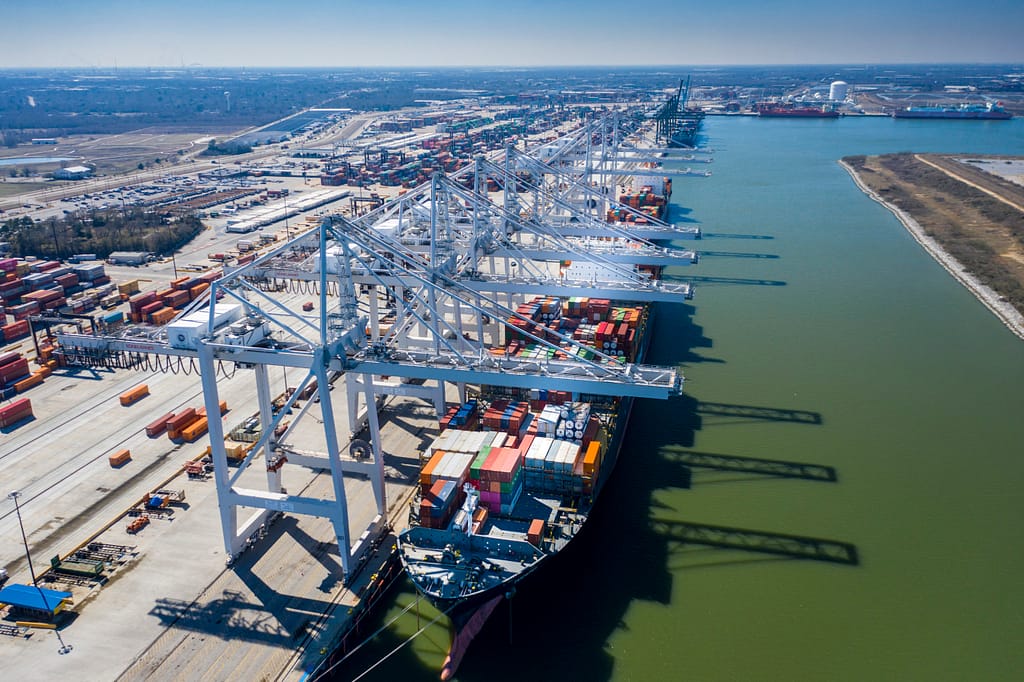The Port of Houston has grown into one of the busiest and most influential ports in the United States. Its transformation from a small waterway into a major hub of global trade reflects the city’s commitment to innovation and economic development. The port plays a vital role in supporting Houston’s economy, handling millions of tons of cargo each year and connecting the region to international markets.

Early Days: The Birth of a Trade Hub
Houston’s port history began with the use of Buffalo Bayou in the early 1800s as a transportation route for settlers and traders. The bayou offered a direct link to the Gulf of Mexico, allowing ships to move goods such as cotton, timber, and food supplies. The natural flow of the waterway made it a convenient, if limited, trade route for local merchants.
However, the depth of the bayou restricted larger vessels, limiting Houston’s trade potential. As the city expanded, business leaders recognized the need for a deeper channel to support growing trade demands. This realization sparked efforts to transform Buffalo Bayou into a navigable shipping channel.
Creating the Houston Ship Channel: A Turning Point
In 1914, the completion of the Houston Ship Channel marked a significant turning point in the city’s economic development. The channel, created by dredging Buffalo Bayou, allowed larger vessels to dock closer to Houston, eliminating the need for overland transportation from Galveston.

The ship channel not only facilitated faster trade but also attracted industries to the region. Oil refineries, chemical plants, and manufacturing facilities sprang up along the waterway, taking advantage of the port’s access to both domestic and international markets. Houston quickly became a center for petroleum exports, which drove further investments in port infrastructure.
Expansion and Modernization
Throughout the 20th century, the Port of Houston continued to expand and modernize. The construction of barge terminals, container facilities, and warehouses ensured that the port could handle growing volumes of diverse cargo. In addition to oil and chemicals, the port became a key point of entry for automobiles, consumer goods, and agricultural products.
Technological advancements also helped the port remain competitive. The introduction of containerization in the 1960s revolutionized the shipping industry, reducing loading times and lowering costs. The Port of Houston was quick to adopt these innovations, further solidifying its role as a leader in global trade.
Economic Impact and Job Creation
The Port of Houston has a profound impact on the local and national economy. It is directly responsible for more than 1.3 million jobs and contributes billions of dollars to the U.S. economy each year. The port’s strategic location and efficient operations make it a preferred choice for companies engaged in import-export activities.
In addition, the port fosters entrepreneurship by supporting a network of logistics providers, trucking companies, and freight forwarding businesses. The ripple effect of port-related commerce strengthens multiple sectors, including retail, manufacturing, and construction.
Environmental Challenges and Sustainability
While the port has driven economic growth, it has also faced environmental challenges. Pollution from vessels and industrial activities raised concerns about air and water quality. In response, the Port of Houston has implemented sustainability initiatives aimed at reducing its environmental footprint.
These efforts include the adoption of cleaner fuel technologies, improved waste management practices, and programs to protect local wildlife. The port is also investing in green infrastructure, such as shore power systems, which allow ships to reduce emissions while docked.
The Future of the Port of Houston
Looking ahead, the Port of Houston is poised to remain a critical player in global trade. With ongoing investments in infrastructure upgrades and digital technologies, the port aims to enhance efficiency and capacity. Expansion projects, including the widening of the ship channel, will ensure that the port can accommodate larger vessels and meet future trade demands.
The Port of Houston also plays a key role in Houston’s Climate Action Plan, balancing economic growth with environmental sustainability. As the city navigates the challenges of climate change and global competition, the port will continue to adapt, ensuring its position as a leader in commerce and innovation.